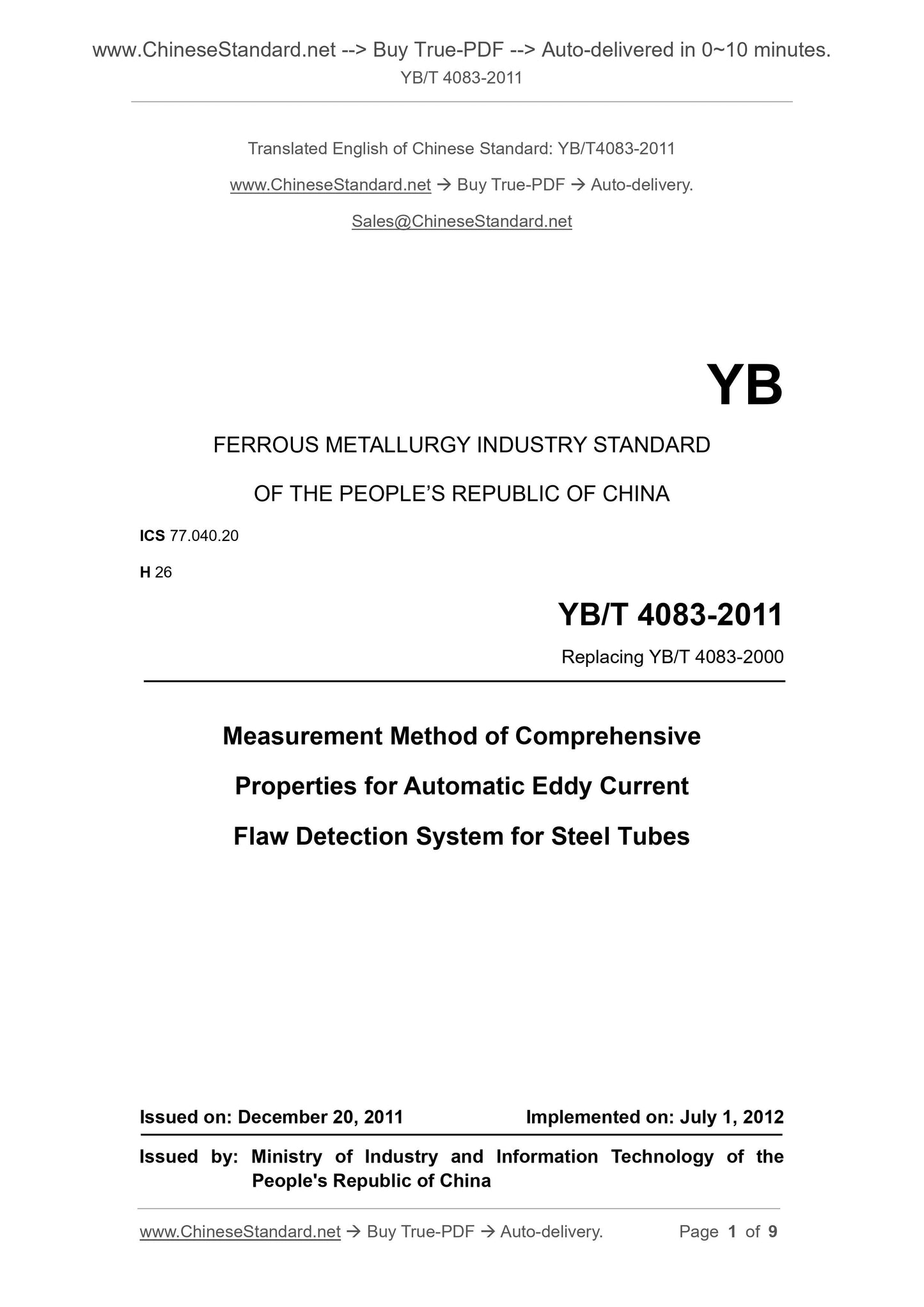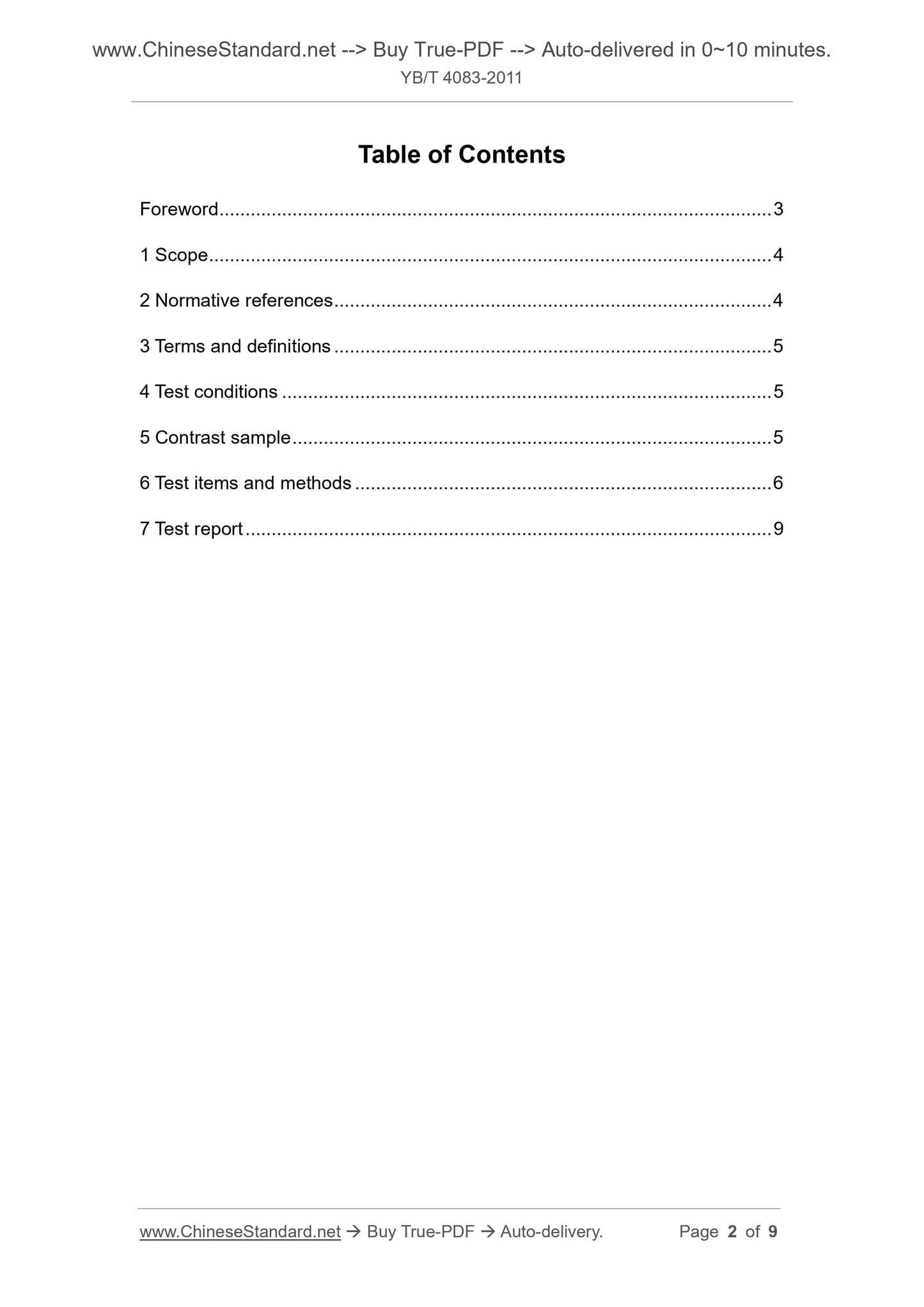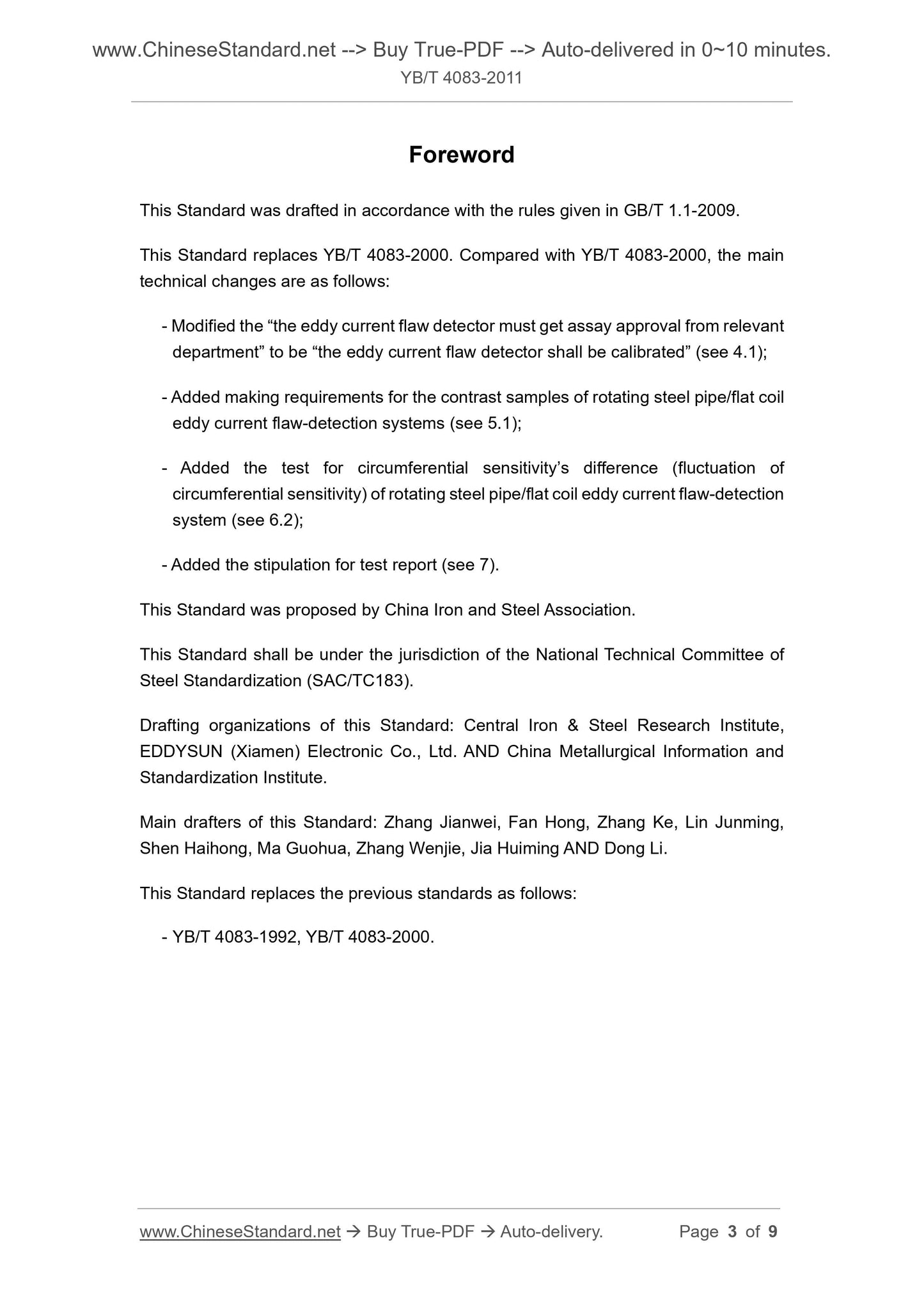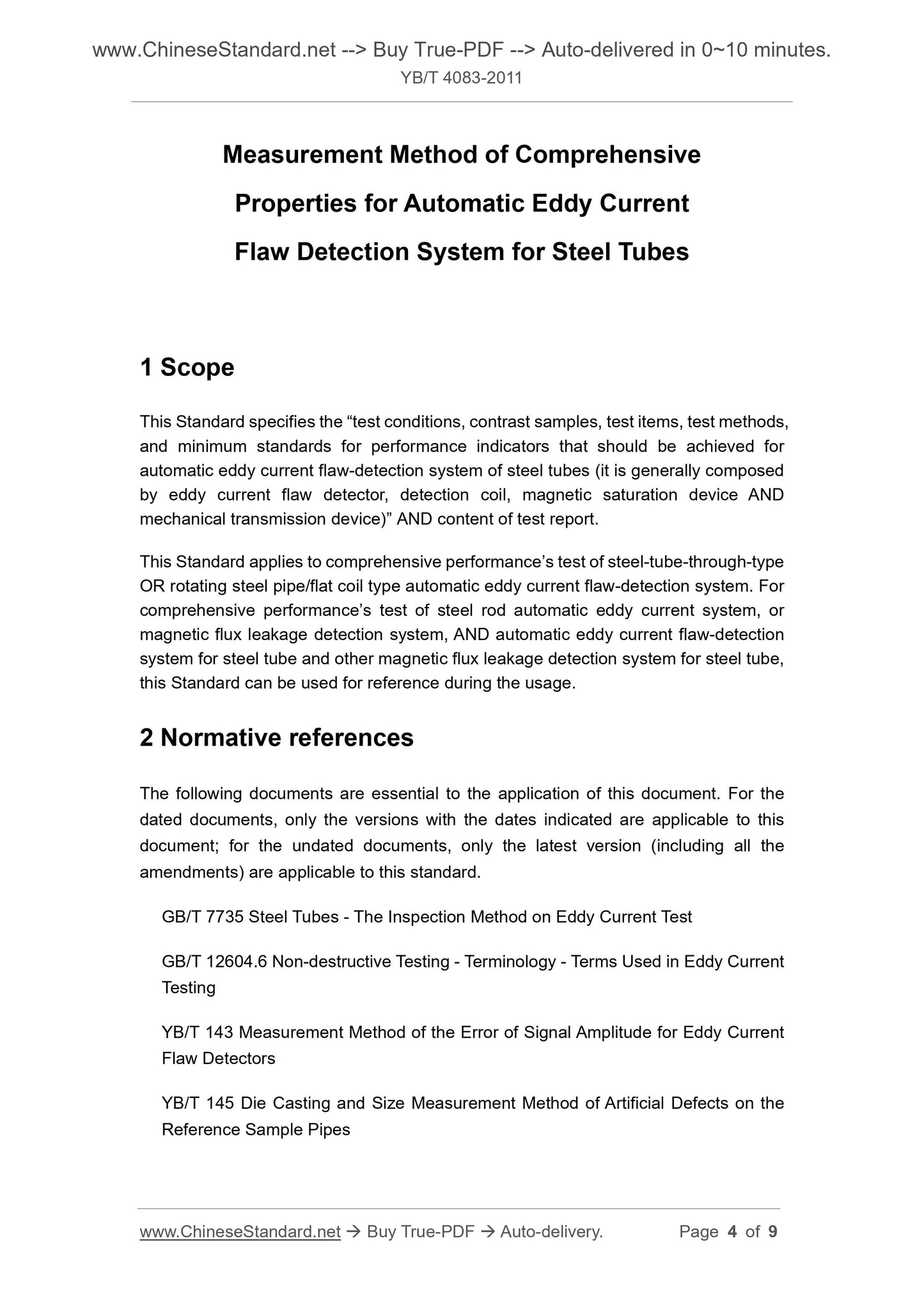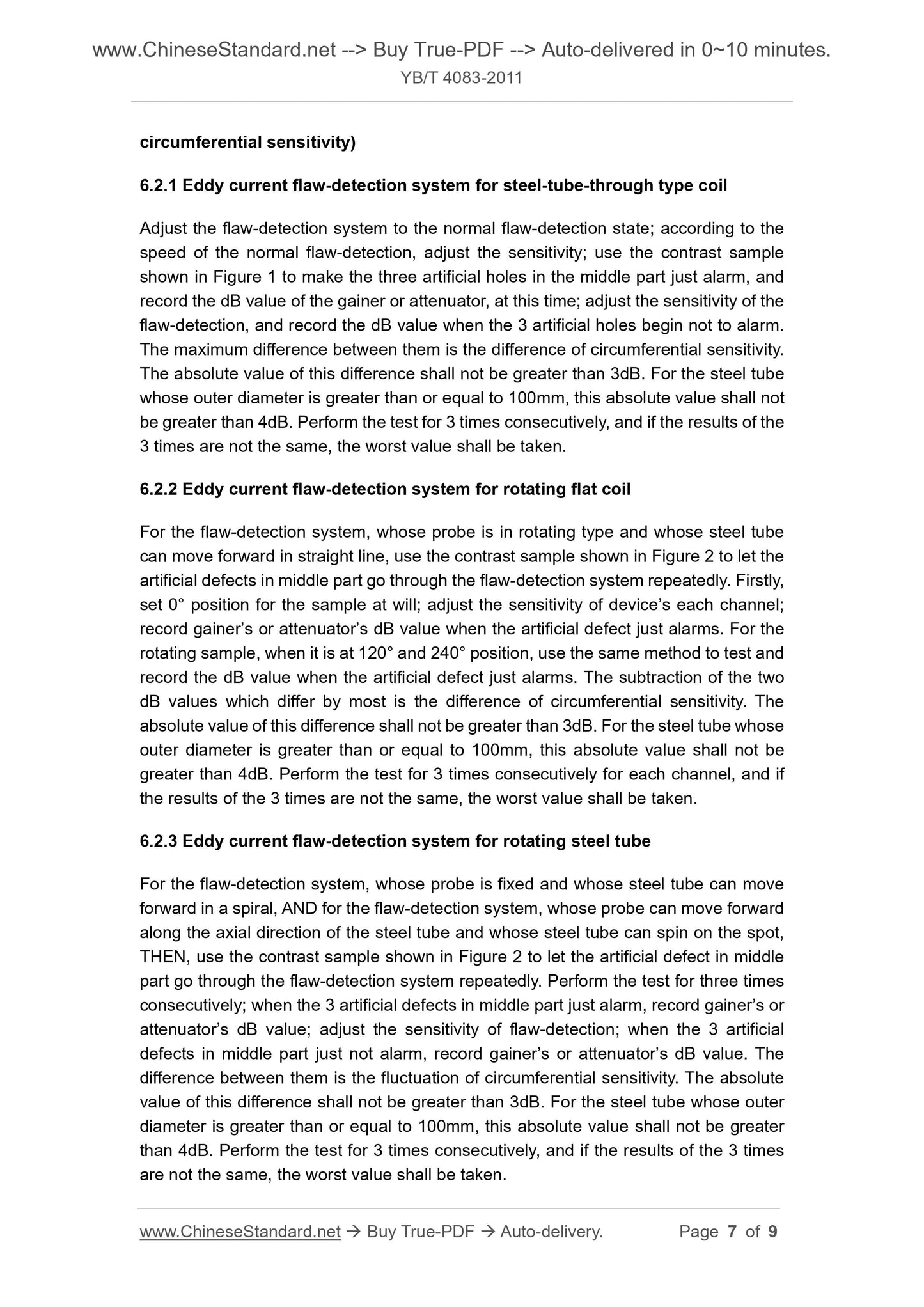1
/
of
5
www.ChineseStandard.us -- Field Test Asia Pte. Ltd.
YB/T 4083-2011 English PDF (YB/T4083-2011)
YB/T 4083-2011 English PDF (YB/T4083-2011)
Regular price
$140.00
Regular price
Sale price
$140.00
Unit price
/
per
Shipping calculated at checkout.
Couldn't load pickup availability
YB/T 4083-2011: Measurement method of comprehensive properties for automatic eddy current flaw detection system for steel tubes
Delivery: 9 seconds. Download (and Email) true-PDF + Invoice.Get Quotation: Click YB/T 4083-2011 (Self-service in 1-minute)
Newer / historical versions: YB/T 4083-2011
Preview True-PDF
Scope
This Standard specifies the “test conditions, contrast samples, test items, test methods,and minimum standards for performance indicators that should be achieved for
automatic eddy current flaw-detection system of steel tubes (it is generally composed
by eddy current flaw detector, detection coil, magnetic saturation device AND
mechanical transmission device)” AND content of test report.
This Standard applies to comprehensive performance’s test of steel-tube-through-type
OR rotating steel pipe/flat coil type automatic eddy current flaw-detection system. For
comprehensive performance’s test of steel rod automatic eddy current system, or
magnetic flux leakage detection system, AND automatic eddy current flaw-detection
system for steel tube and other magnetic flux leakage detection system for steel tube,
this Standard can be used for reference during the usage.
Basic Data
| Standard ID | YB/T 4083-2011 (YB/T4083-2011) |
| Description (Translated English) | Measurement method of comprehensive properties for automatic eddy current flaw detection system for steel tubes |
| Sector / Industry | Ferrous Metallurgy Industry Standard (Recommended) |
| Classification of Chinese Standard | H26 |
| Classification of International Standard | 77.040.20 |
| Word Count Estimation | 8,874 |
| Date of Issue | 2011-12-20 |
| Date of Implementation | 2012-07-01 |
| Older Standard (superseded by this standard) | YB/T 4083-2000 |
| Quoted Standard | GB/T 7735; GB/T 12604.6; YB/T 143; YB/T 145 |
| Regulation (derived from) | Ministry of Industry and Information Technology Notice No. 43 of 2011 |
| Issuing agency(ies) | Ministry of Industry and Information Technology |
| Summary | This standard specifies the pipe automatic eddy current inspection system integrated performance test conditions, comparative samples, test items, test methods, indicators and the content of the test report shall meet the minimum performance. This standard applies to steel pipe through the type or rotary/flat coil automatic eddy current inspection system integrated performance testing, eddy current, or the bars automatically magnetic flux leakage inspection systems and the use of other forms of detection coil steel automatic eddy current inspection system, pipe automatic comprehensive performance testing magnetic flux leakage detection system can refer to use. |
Share
